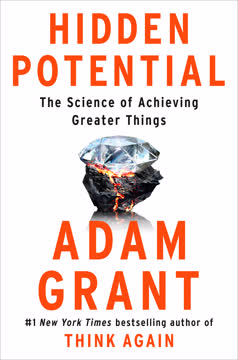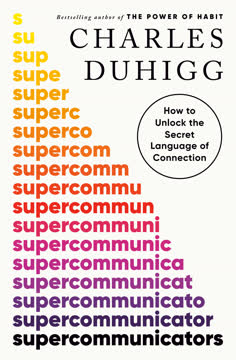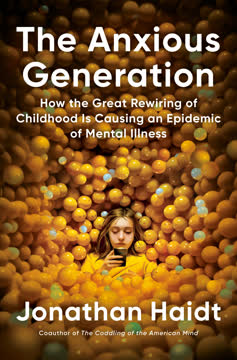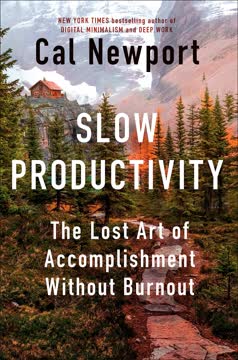Key Takeaways
1. Life's Two Mountains: From Self-Centered Success to Meaningful Commitment
"The first mountain is about building up the ego and defining the self, the second mountain is about shedding the ego and losing the self."
The two mountains metaphor illustrates the journey from self-centered achievement to a life of meaningful commitment. The first mountain represents the pursuit of individual success, career advancement, and personal goals. It's characterized by:
- Focus on résumé virtues: wealth, status, and recognition
- Emphasis on individual autonomy and self-actualization
- Pursuit of happiness through personal accomplishments
The second mountain emerges after a period of struggle or disillusionment, leading to a shift in priorities:
- Emphasis on eulogy virtues: character, relationships, and service to others
- Commitment to causes larger than oneself
- Pursuit of joy through meaningful relationships and contributions to community
The transition between mountains often involves:
- A crisis or period of suffering
- Reassessment of values and priorities
- Recognition of the limitations of individualism
- Desire for deeper connection and purpose
2. The Stages of Intimacy: From Glance to Fusion
"Love is a union of souls. When one member of a couple suffers from Alzheimer's, the other doesn't just go away. Instead, as Lewis puts it, love says, 'Better this than parting. Better to be miserable with her than happy without her.'"
The journey of intimacy progresses through several stages, each deepening the connection between partners:
- The Glance: Initial attraction and interest
- Curiosity: Desire to know more about the other person
- Dialogue: Mutual unveiling and sharing of personal stories
- Combustion: Intense emotional and physical connection
- Crisis: Confronting differences and challenges
- Forgiveness: Working through conflicts and rebuilding trust
- Fusion: Deep emotional and spiritual connection
Key elements in building lasting intimacy:
- Vulnerability and willingness to be known
- Active listening and empathy
- Shared experiences and challenges
- Commitment to growth and forgiveness
- Balancing individuality with unity
As relationships mature, they evolve from passionate love to a deeper, more enduring bond characterized by mutual support, shared history, and a sense of unity in the face of life's challenges.
3. Marriage as a Moral Education and Lifelong Commitment
"Marriage is not just a relationship; it is a covenant. It's a moral promise to hold fast through thick and thin."
Marriage as moral formation shapes individuals through the daily practice of love, compromise, and selflessness. It serves as:
- A school for character development
- A crucible for personal growth
- A foundation for building a shared life and legacy
Key aspects of a strong marriage:
- Commitment: Choosing to love and support each other daily
- Communication: Open, honest dialogue and active listening
- Conflict resolution: Learning to navigate disagreements constructively
- Shared values and goals: Building a life together with common purpose
- Forgiveness and grace: Accepting each other's flaws and offering second chances
The challenges of marriage often lead to personal transformation:
- Overcoming selfishness and ego
- Developing empathy and understanding
- Learning to compromise and sacrifice
- Building resilience through shared struggles
Ultimately, a successful marriage requires ongoing recommitment, adapting to life's changes while maintaining a core of love and mutual respect.
4. Finding Your Vocation: Aligning Passion with Purpose
"Vocation does not come from willfulness. It comes from listening. I must listen to my life and try to understand what it is truly about—quite apart from what I would like it to be about."
Discovering one's vocation involves a journey of self-discovery and alignment with deeper values and passions. It differs from a career in several key ways:
| Career | Vocation |
|---|---|
| Focused on external rewards | Driven by inner calling |
| Shaped by market demands | Guided by personal values and talents |
| Aims for success and achievement | Seeks fulfillment and contribution |
| Often chosen for practical reasons | Emerges from deep-seated desires |
Steps to finding your vocation:
- Listen to your life: Reflect on moments of deep engagement and joy
- Identify recurring themes and interests
- Explore different fields and experiences
- Seek mentorship and guidance
- Be open to unexpected opportunities and callings
Characteristics of a true vocation:
- Combines personal passion with societal needs
- Provides a sense of purpose beyond financial gain
- Engages your unique talents and strengths
- Feels like a natural extension of your authentic self
- Inspires continual growth and learning
Embracing your vocation often requires courage to defy conventional expectations and trust in your inner wisdom. It may involve periods of uncertainty and struggle, but ultimately leads to a more fulfilling and meaningful life.
5. Faith as a Journey of Transformation and Surrender
"Faith is homesickness. Faith is a lump in the throat. Faith is less a position on than a movement toward, less a sure thing than a hunch. Faith is waiting."
The faith journey is characterized by a gradual transformation of one's worldview and sense of self. It involves:
- Questioning previously held beliefs
- Embracing mystery and uncertainty
- Surrendering control to a higher power
- Developing a sense of awe and wonder
Stages of faith development:
- Awakening: Initial curiosity or spiritual experiences
- Exploration: Seeking understanding through study and practice
- Doubt and struggle: Wrestling with difficult questions and contradictions
- Surrender: Letting go of the need for certainty and control
- Integration: Incorporating faith into daily life and decision-making
Key aspects of a mature faith:
- Humility: Recognizing the limits of human understanding
- Openness: Willingness to engage with different perspectives
- Service: Expressing faith through action and care for others
- Community: Sharing the journey with fellow seekers
- Gratitude: Cultivating appreciation for life's blessings
Faith often involves periods of darkness and doubt, which can lead to deeper understanding and commitment. It's not about achieving certainty, but about learning to trust and find meaning in the face of life's complexities.
6. Building Community: From Isolation to Connection
"Community is connection based on mutual affection. Tribalism, in the sense I'm using it here, is connection based on mutual hatred. Community is based on common humanity; tribalism on common foe."
Creating vibrant communities requires intentional effort to foster connection and shared purpose. Key elements include:
- Shared stories and values
- Regular gatherings and rituals
- Mutual support and care
- Collaborative projects and goals
Steps to building community:
- Identify common interests or needs
- Create spaces for regular interaction
- Encourage vulnerability and authentic sharing
- Develop shared traditions and celebrations
- Engage in collective problem-solving and action
Challenges to community building:
- Individualism and self-sufficiency culture
- Digital distractions and virtual connections
- Busy schedules and competing priorities
- Fear of vulnerability and rejection
- Lack of shared physical spaces
Successful communities foster a sense of belonging, provide emotional support, and create opportunities for personal growth and collective action. They require ongoing commitment and effort from members to maintain and strengthen connections over time.
7. The Power of Story in Shaping Identity and Purpose
"You are not even the owner of yourself. Your talents merely flow through you; you give yourself to the one who made you."
Personal and collective narratives play a crucial role in shaping our sense of identity, values, and purpose. Stories help us:
- Make meaning of our experiences
- Connect with others and build empathy
- Envision possibilities for the future
- Transmit cultural values and wisdom
Key elements of powerful stories:
- Clear narrative arc: Beginning, middle, and end
- Relatable characters and conflicts
- Emotional resonance
- Universal themes
- Call to action or transformation
The importance of story in different contexts:
Community building:
- Shared history and traditions
- Collective vision for the future
- Celebration of local heroes and achievements
Personal growth:
- Reframing past experiences
- Identifying patterns and themes in one's life
- Creating a compelling vision for the future
Faith and spirituality:
- Sacred texts and parables
- Testimonies of transformation
- Myths and symbols that convey deeper truths
By consciously shaping and sharing our stories, we can foster deeper connections, inspire change, and create a sense of purpose that transcends individual achievement.
Last updated:
FAQ
What's The Second Mountain about?
- Two Mountain Metaphor: The book uses the metaphor of two mountains to describe life’s journey. The first mountain is about personal success and ego-driven goals, while the second mountain focuses on commitment, joy, and service to others.
- Seasons of Suffering: It explores how suffering can lead to a reassessment of life and motivations, often resulting in a more meaningful existence.
- Commitments and Relationships: Emphasizes the importance of commitments to vocation, marriage, faith, and community as essential for a fulfilling life.
Why should I read The Second Mountain?
- Personal Growth: Offers insights into transitioning from a self-centered life to one focused on others, encouraging reflection on what truly brings joy and fulfillment.
- Cultural Critique: Critiques modern hyper-individualism and its societal impact, advocating for a return to community and relational values.
- Practical Guidance: Provides actionable advice on making meaningful commitments and navigating life’s challenges, inspiring readers to enhance their relationships and sense of purpose.
What are the key takeaways of The Second Mountain?
- Joy vs. Happiness: Distinguishes between fleeting happiness and enduring joy, which arises from serving others and living a committed life.
- Importance of Commitment: Highlights four major commitments: vocation, spouse and family, philosophy or faith, and community, as essential for a meaningful life.
- Transformation through Suffering: Portrays suffering as a catalyst for personal growth, leading to a deeper understanding of oneself and a life of service.
What are the best quotes from The Second Mountain and what do they mean?
- “Joy is not just a feeling, it can be an outlook.”: Emphasizes that joy is a deeper state of being from living for others, suggesting a joyful perspective leads to fulfillment.
- “The load, or weight, or burden of my neighbor’s glory should be laid daily on my back.”: Reflects the idea that true fulfillment comes from caring for others, highlighting community and interdependence.
- “You have to lose yourself to find yourself.”: Encapsulates the necessity of surrendering the ego to discover a deeper sense of purpose, suggesting personal growth requires letting go of self-centered desires.
What is the significance of the two mountains in The Second Mountain?
- First Mountain: Represents the pursuit of personal success, ego, and societal validation, focusing on reputation and individual happiness.
- Second Mountain: Symbolizes a shift towards commitment, service, and joy, finding deeper meaning through relationships and contributing to others' well-being.
- Journey of Transformation: The transition often involves suffering or disillusionment, crucial for personal growth and discovering true purpose.
How does The Second Mountain address the concept of suffering?
- Catalyst for Growth: Suffering is seen as a catalyst for profound personal transformation, forcing individuals to confront their true selves.
- Valley Experience: Describes the valley as a place of bewilderment and suffering, leading to a deeper understanding of oneself and capacity for love.
- Response to Suffering: Emphasizes that embracing suffering and helping others can lead to strength and fulfillment.
What are the four commitments discussed in The Second Mountain?
- Vocation: Involves dedicating oneself to a meaningful career or calling that serves others, aligning work with values and passions.
- Marriage and Family: Focuses on building loving partnerships, highlighting the joy from nurturing relationships and shared experiences.
- Philosophy or Faith: Encourages developing a belief system or philosophy that guides life, seeking deeper meaning and connection.
- Community: Emphasizes being part of a community and contributing to its well-being, fostering belonging and connection.
How does The Second Mountain define joy?
- Enduring State: Describes joy as a deeper, lasting state than happiness, arising from commitment and service to others.
- Transcendence of Self: Involves a sense of connection and fusion with others, experienced when losing oneself in acts of love and service.
- Moral Joy: Introduces moral joy, derived from living in accordance with values and serving others, seen as the highest state of being.
What role do mentors play in finding one’s vocation according to The Second Mountain?
- Guidance and Support: Mentors provide practical advice and support, helping navigate career paths and offering insights from experience.
- Modeling Excellence: Exemplify values and behaviors associated with mastery, inspiring mentees to strive for excellence.
- Encouraging Reflection: Encourage reflection on experiences and desires, helping identify passions and guide meaningful commitments.
How does The Second Mountain suggest we make big life decisions?
- Listen to Your Life: Emphasizes listening to one’s inner self and desires, reflecting on experiences and what truly matters.
- Consider the Impact: Advocates thinking about how decisions affect oneself and others, prioritizing relationships and community.
- Embrace Uncertainty: Suggests embracing uncertainty and being open to change for more fulfilling outcomes.
How does The Second Mountain address the issue of social isolation?
- Crisis of Connection: Discusses how hyper-individualism leads to social isolation and loneliness, impacting mental health and community well-being.
- Relationalism as a Solution: Advocates for relationalism, prioritizing strong connections and commitments to combat isolation.
- Practical Steps: Provides advice on cultivating relationships and engaging with the community, emphasizing service and mutual support.
What is the "code of the neighbor" mentioned in The Second Mountain?
- Community Responsibility: Emphasizes taking responsibility for one’s community and actively participating in its well-being.
- Principles of Neighborliness: Includes initiating connections, practicing hospitality, and recognizing community expertise in addressing challenges.
- Long-Term Commitment: Encourages thinking about the long-term impact on the community, promoting stewardship and collective responsibility.
Review Summary
The Second Mountain receives mixed reviews. Some praise Brooks' insights on finding meaning through community and service, while others criticize his writing as preachy and self-indulgent. Readers appreciate the book's exploration of commitment, joy, and personal growth, but some find it disconnected from average experiences. Critics question Brooks' qualifications to give life advice, especially regarding marriage. The book's structure and focus are debated, with some finding it thought-provoking and others seeing it as disjointed. Overall, opinions vary widely on the book's value and relevance.
Similar Books










Download PDF
Download EPUB
.epub digital book format is ideal for reading ebooks on phones, tablets, and e-readers.








